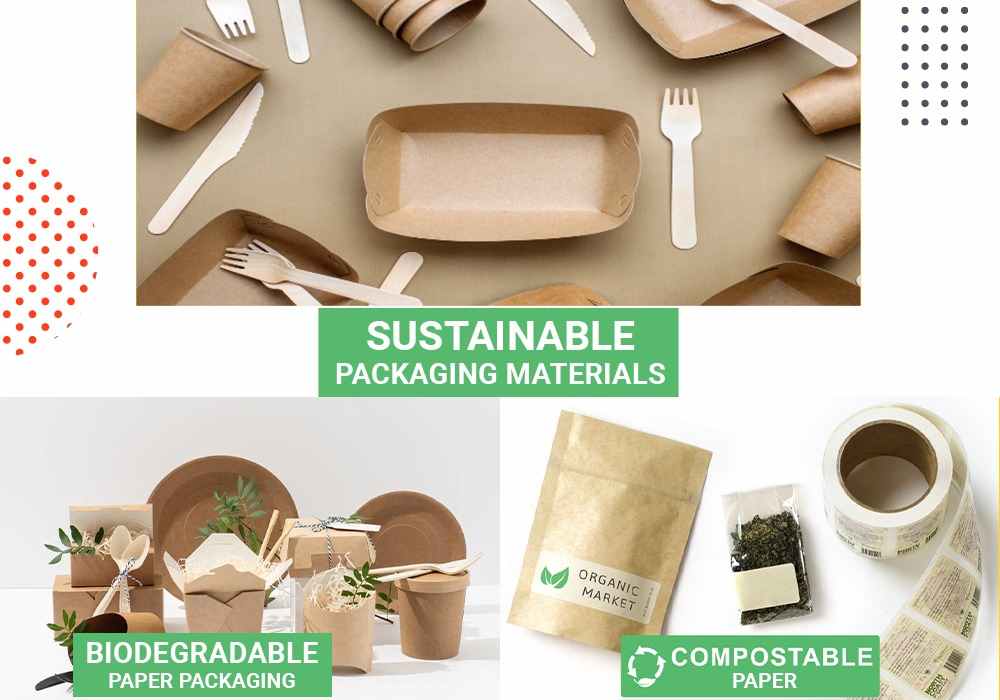Food packaging materials is a concept recently adopted by many companies and their popular marketing advertising strategy, highlighting the importance of food packaging. One of the biggest challenges for food packaging companies is to create packages with minimal environmental impact that uses sustainable materials in their design. The following is a list of environment protection food packaging materials:
Bioplastics
One of the best things you can do to reduce your environmental impact is to choose environmentally friendly materials for your food packaging. There are many different types of bioplastics, but they all share one thing in common: they’re made from plants instead of petroleum.
One of the most popular bioplastic materials include:
PLA (polylactic acid)
PLA is made from corn starch and is often useful for food packaging because it doesn’t contain toxic chemicals or additives and is easy to recycle. It also has a high melting point so that it can withstand heat better than other plastics. However, it isn’t as flexible as other bioplastics, so it’s not as commonly useful for food packaging applications like bags or bottles.
Bioplastics made from corn starch are often refer to as “corn plastic” because they’re made from a renewable resource that isn’t petroleum-base. PLA is also a good alternative for people allergic to traditional plastics made from fossil fuels because it doesn’t contain harmful chemicals like phthalates.

Sustainable Packaging Materials
There are many different types of sustainable packaging materials in use today. Food packaging is one area where these materials have been widely adopt, as the health and safety of consumers depend on them.
Some of the main sustainable packaging materials include:
Biodegradable Plastics
Biodegradable plastics can be made from plant-based oils, cornstarch, and other biodegradable materials. They are widely useful in food packaging because they are lightweight and can help reduce food waste. These plastics degrade when they come into contact with water and oxygen, so they do not threaten wildlife or the environment.
Recyclable Plastics
Recyclable plastics are made from recycle materials, such as plastic bottles or old tires, that have been recycle into new plastic products, such as containers for consumer use. These products are becoming more popular as people become more aware of environmental concerns regarding waste disposal methods that don’t harm the environment (such as landfills). Recyclable plastics are often marked with a symbol on the bottom of the product to indicate that it is recyclable and should be dispose of properly at a recycling center (e.g., a triangle with arrows pointing away from each other).
Biodegradable Paper Packaging
Biodegradable paper packaging is a great option for food packaging because it’s made from natural materials and can be composted. They are made from plants such as wood fiber, bamboo fiber, or sugarcane pulp. These fibers are then processed into sheets of paper that can be useful for food packaging.
The main benefit of biodegradable paper is that it doesn’t take up as much space in landfills as other food packaging materials. The biodegradable paper also breaks down naturally when expose to sunlight and water, so it can be dispose of in a way that won’t harm the environment or wildlife.
Compostable Paper
The Compostable packaging is a great way to help the environment. This Compostable packaging is better for the planet because it breaks down quickly, so it doesn’t have to be thrown away in a landfill. The good news is that there are many options for compostable packaging materials. One of the most common materials useful for compostable food packaging is paper.
Paper is an excellent choice for food packaging because it is durable and strong enough to protect food items during shipping. It also feels natural, which makes it easy for customers to use. Paper can be manufacture with recycle materials or trees that are grown specifically for this purpose as well. This helps reduce the amount of waste in landfills while saving money on production costs!
Cotton and Canvas Bags
Cotton and canvas bags are trendy in the food packaging industry. The main reason for this is that they are environmentally friendly. Cotton and canvas bags can be form of hemp, cotton, and other similar materials. These materials are biodegradable and do not require any chemicals or harmful processes to be produce.
The biggest advantage of using cotton and canvas bags is that they are reusable. This means that they can be useful over and over again without breaking down or losing their shape. Many prefer these bags because they do not have to worry about buying new ones every time they go shopping.
Another great thing about using cotton or canvas bags. Is that they can be customize with your logo or business name print on it. So you will stand out from other businesses that use plastic bags instead. In addition, many different styles are available for consumers. So you should consider adding them to your inventory if you still need to!
Conclusion
In a nutshell, food packaging plays a vital role in the packaging industry because. It delivers the product to the customer and protects it from damage, contamination, and degradation. Therefore, manufacturers are giving more importance to using environment friendly materials for food packaging. Designers focus on three significant parameters the design of the food box. The eco-friendly material useful for the manufacturing of the food box, and the dimensional accuracy of the box.
















You professionally describe “PLA”